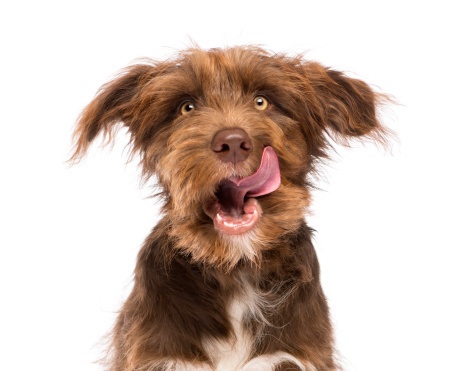“This post contains affiliate links, and I will be compensated if you make a purchase after clicking on my links.”
Making an effort to understand what your pooch is saying can provide you lots of useful information, like when your furball is frightened, uneasy about something, or even tense and might be all set to snap at someone. Just take a look at his face and pay attention to his entire body and you will an idea of what he’s trying to tell you. Although dogs do make use of signals and sounds, most of their messages are shown through their unique body language.
When Focusing on Fido’s Face
Despite the fact that dogs’ heads and faces generally come in various shapes and sizes, just keep in mind that your little four-legged best friend’s facial expressions can uncover a lot about what exactly he is feeling.

1. Looking into your dog’s eyes. Like humans, dogs can also (although within limits) change the size and shape of their eyes or even the intensity and direction of their gaze. You’ll know if your pooch is happy if his eyes are at their normal profile. Eyes that seem larger than usual often suggest that the dog is feeling somewhat defenseless or threatened which is normally an indication of stress, fear, or aggression. Now, if your dog’s eyes appear smaller than normal, it may signify that your pet is not feeling well or is in pain. Squinting eyes may also denote submissiveness or distress. When it comes to the intensity and direction of Fido’s gaze, consider the following: if your dog gazes at you with a relaxed face, it means that he is being pleasant and probably even yearning for your attention; a direct tense stare, however, implies threat; if he looks away, it indicates that he doesn’t want to look threatening or that he is being submissive.

2. Reading Fido’s lips. Although dogs don’t usually use of their mouths for chatter, the way their lips, teeth, and jaws are positioned already speaks volumes. While a relaxed and happy dog will usually have a closed or slightly opened mouth, a submissive or a frightened pooch, on the other hand, will have a closed mouth with the lips somewhat pulled back at the corners. He might even start flicking his tongue inside and outside or begin licking when interacting with someone or another pet. In addition, the uptight feeling may be shown with exaggerated yawns. Now, watch out for retracted lips, exposed teeth, and wrinkled muzzles as these often indicate aggression.

3. Watching your pooch’s ears. For dogs that seem comfortable and relaxed, they would normally hold their ears naturally. When they are alert and ready to act, they would raise their ears higher, directing them to whatever that caught their interest. If the dog is feeling aggressive, his ears will most likely be raised and forward; and when he wants to be friendly, expect that his ears will be pulled back a little. Furthermore, submissiveness or fear may be shown by a completely flattened ears or perhaps a pair that’s wholly stuck out to the sides of his head.
Because your dog speaks with his entire body, not just with his face, tail, or posture, it’s important to understand all of your dog’s body languages and the context in which each are used.
Click here for Part One: The Posture, and click here for Part Two: The Tail.



















Jenn
Oct 18, 2013 at 2:33 pm
I’ve read all three of these articles, and wow, they’ve left out a lot of information! For instance, almost all dogs pant when nervous. A dominant dog can go from panting(usually read as relaxed) to an attack with no “warning”. Some breeds have a set tail carriage, so their tails do not follow the rules. Chows carry their tails over their backs all the time, very rarely do they unroll to show emotion. Many mastiff and sighthound breeds carry the tails down or even tucked slightly. While there are ‘universal’ body language signs, many dogs may not show them all, or seem to understand them. Puppies removed from litters too early, dogs that have not been socialized, and some purebreds don’t show emotions. I see this most often at the dog park with labs and goldens. They are normally very friendly, but don’t read the ‘back off’ cues of the other dogs and end up being attacked or chasing a scared dog. I think the best advice is to pay attention, and not get pushy with any dog. Realize that they are not stuffed animals, let them approach you, and learn what your own body language is saying to the dog.